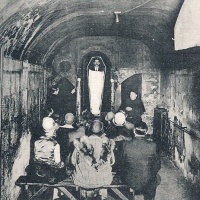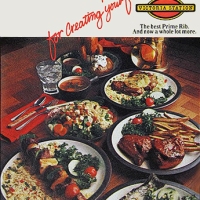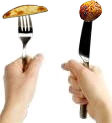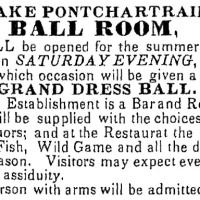Since the early 19th century, observers have commented on how fast Americans eat. Visitors from other countries were especially apt to notice the speed with which people, particularly men, gulped down their food and hurried away from the table as quickly as possible.
In the 1843 book Men and Manners in America, the author observed that “all was hurry, bustle, clamor, and voracity, and the business of repletion went forward with a rapidity altogether unexampled.” He described how at breakfast he had barely arrived at the communal table as others were rushing off, leaving behind a terrific mess of chicken bones, an upset mustard pot, and a tablecloth with egg, coffee, and gravy stains. Dinner was no better: “the same scene of gulping and swallowing, as if for a wager.” Many of his fellow diners left the dining room before the second course and few waited for dessert.
His observations were ratified by many others, continuing throughout the 19th century and into the 20th. New York’s inexpensive “slam-bang” places with counters were especially noted for their customers’ speed of eating. Viewed from the back, wrote an essayist in 1865, a row of 30 men with heads bent down and elbows moving rapidly looked as though they were weaving or fiddling. They finished in about 8 minutes.
A Scribner’s story in 1874 described the typical American restaurant as a place where men “do not eat – they feed,” without even removing their hats. It reported that the average mid-day “dinner” time lasted 6 minutes and 45 seconds. At New York’s Astor House of the 1880s – scarcely a low-class eatery – many of the male customers ate standing up at a counter, a practice that was by no means rare. A visiting French economist attributed the popularity of 5-minute counter lunches in saloons to the wish not to interfere with business — a convenience “that does not cut the day in two.” Or, as another writer put it in 1895, “The ammunition is put in, with a wad of dessert on top, and in ten minutes the man who is going to be a millionaire in less than ten years is back at his desk, loaded and pointed at his work . . .”
By the late 1890s, women had also become speed eaters, “stopping in restaurants when shopping and being in such a hurry that they don’t care what they eat and do not even remove hats and coats.” The so-called “new woman” was ready to sit at lunch counters “like a man and eat her pie and drink her coffee in a hurly-burly.”
The late 19th century also witnessed the development and spread of new restaurant types organized around speed – the cafeteria, the automatic restaurant, and the quick lunch, all of which were based on the abolition of table service. They also did away with the much-hated custom of tipping that was widely viewed as a foreign importation from old and dying Europe.
Through the 20th century speediness was made into a science, increasingly applying not only to how fast customers ate, but how quickly food could be prepared, how quickly customers could be presented with food, and how they could be induced to leave as soon as possible. The hot noontime “dinner” gave way to the sandwich lunch. The number of menu choices was reduced. Chains developed that produced food in central commissaries, doing away with the need for full-scale restaurant kitchens. Cafeterias discovered they could speed up the serving line by wrapping silverware in a napkin. Uncomfortable seating could be designed to stop patrons from lingering.
After the second World War, in which the military had developed rapid methods of feeding troops, speed-up technology advanced in restaurants. A California drive-in had machines that could mold 800 hamburger patties per hour and slice 1,000 buns in the same time. In 1956 an automatic broiler was advertised to drive-ins that broiled approximately 300 burgers an hour. The franchise system began to spread quickly to drive-in eateries across the country, but now without curb service because it was much too slow even if carhops wore roller skates. Even table-service restaurants, catering to the relatively leisurely dinner crowd which was on the increase in the 1960s, improved their speed with frozen foods, boiling bags, and microwave ovens.
By 1965, more than 70% of the more than 378,000 commercial eating places in this country were quick-service restaurants, according to a marketing research study.
No one comments about Americans eating fast anymore. It has become normal.
© Jan Whitaker, 2021















 It's great to hear from readers and I take time to answer queries. I can't always find what you are looking for, but I do appreciate getting thank yous no matter what the outcome.
It's great to hear from readers and I take time to answer queries. I can't always find what you are looking for, but I do appreciate getting thank yous no matter what the outcome.



This reminds me that I find along with the “fast” food increases, we have lost a lot of graciousness of earlier times. My mother was fanatic about quietly enjoying a meal & food should be an experience, not something that is hastily gobbled down with no attention.
Your mother was in agreement with the critics of fast eaters long ago.
I am not as much in a hurry to be a millionaire as the men you write about, but I probably eat as fast; I can’t stand to think of my food getting cold.
Hmmm, I may be guilty of that myself sometimes.
The Hourglass tavern in NYC puts an hour glass on the table, and you have to leave when the sand runs out. Don’t know how strictly adhere to the rule nowadays (pre-covid) but years ago at lunchtimes and pre-theater it was enforced.
I doubt I would return!